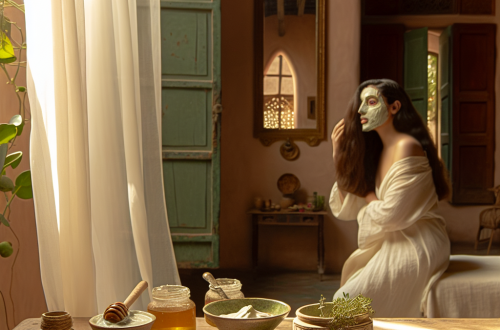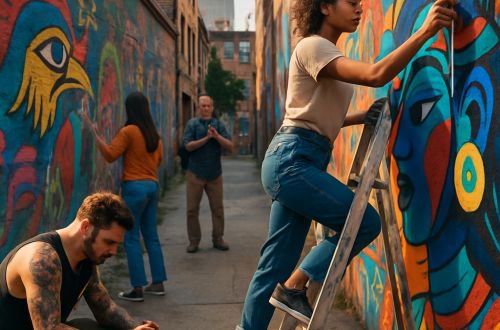Sustainable Fashion Trends Transforming the Industry

Sustainable fashion is a term we hear a lot these days, and for good reason. Our planet’s resources are finite, and the fashion industry, notorious for its environmental impact, is under the microscope like never before. But what’s really happening in this space, and how are these changes making a difference? Let’s dig in, but not too scientifically think of this as a chat over coffee about what’s trendy and eco-friendly, with a sprinkle of skepticism and a dash of humor.
The Green Revolution in Fashion
Fashion, like any other industry, is feeling the heat to go green. Yet, there’s more to sustainable fashion than just using organic cotton. It’s about rethinking the entire lifecycle of clothes from design and production to how we eventually dispose of them. Take Stella McCartney, for example. She’s a major player in this game, championing animal-free materials and innovative fabrics. She once said, “I’m in the fashion industry, but I’m not really in it.” And maybe she’s onto something. The industry is slowly realizing that sustainability isn’t a trend; it’s a necessity.
But let’s not get swept away by some of the greenwashing out there. You know, when companies slap a “sustainable” label on their products without real action behind it. It’s like calling a salad healthy when it’s drowning in ranch dressing. We, as consumers, need to be more discerning, asking tough questions about how products are made.
Circular Fashion: Closing the Loop
The concept of circular fashion is gaining ground. Picture this: a world where clothes never really die, they just get reborn. Sounds a bit like a sci-fi movie, right? Yet, it’s happening. Brands are taking back old threads, recycling them into something new. Patagonia, for instance, has been a pioneer in this area with its Worn Wear program, which encourages customers to trade in their used gear for credit. It’s a win-win less waste, more discounts.
I remember the first time I tried buying second-hand clothes. It was a vintage leather jacket, a real 80s throwback with shoulder pads that could practically take flight. The shopkeeper swore it was authentic, and maybe it was the nostalgia talking, but wearing it felt like I was part of a story a continuation of the jacket’s life. This kind of recycling not only reduces waste but adds a personal touch to fashion.
Then there’s the whole idea of renting clothes. Rent the Runway has made it possible for us to don designer outfits without the guilt of a maxed-out credit card or a cluttered closet. And let’s face it, how often do we wear that fancy dress more than once? It’s like having champagne tastes on a beer budget, and hey, there’s absolutely nothing wrong with that.
Tech Meets Textiles
Technology is revolutionizing how clothes are made, and it’s a lot more exciting than I initially thought. Companies are experimenting with materials that sound like they belong in a futuristic novel. Take Piñatex, made from pineapple leaves, or lab-grown leather, which doesn’t involve a single cow. It’s like my vegetarian friend who found out about lab-grown meat substitutes; she was skeptical at first, but now she swears by it.
But here’s a twist: 3D printing. Yes, you read that right. We’re printing clothes now. Adidas has dipped its toes into this with its Futurecraft 4D sneakers. These are not just shoes; they’re an experiment in reducing waste by crafting only the necessary parts. I’m no sneakerhead, but the idea of wearing something straight out of a printer is intriguing, if not a bit mind-boggling.
And let’s not forget about blockchain. Yes, that’s right, the very technology that powers cryptocurrencies is making its way into fashion, ensuring transparency in the supply chain. So next time you buy a sweater, you might be able to track its journey from the cotton fields to your closet. It’s like having a backstage pass to the fashion show, minus the celebrity selfies.
The Human Element
Sustainability isn’t just about materials; it’s about people, too. The fashion industry has long been criticized for labor practices that are, well, less than humane. The tragic Rana Plaza collapse in 2013 was a huge wake-up call, highlighting the dire need for better working conditions. It’s easy to forget about the human element when we’re dazzled by shiny new clothes, but it’s crucial to remember the faces behind the fabric.
Fast forward a decade, and we see positive changes. Brands like People Tree are ensuring fair wages and safe working environments. Safia Minney, the founder, is a powerhouse pushing for ethical fashion. She once remarked, “It’s not about being perfect. It’s about doing something.” And maybe that’s what we need a nudge in the right direction, rather than aiming for an impossible ideal.
But let’s be honest, sustainable fashion can sometimes feel like an expensive club with an exclusive membership. Many eco-friendly brands are priced way beyond the average budget. It’s a bit like trying to eat healthy on a shoestring budget possible but challenging. That’s why community initiatives and local brands play a pivotal role in making sustainability accessible to everyone, not just those with deep pockets.
Challenges and Controversies
While the push for sustainability is strong, it’s not without its hiccups. There’s a constant debate about whether some sustainable practices genuinely reduce the environmental impact. For instance, organic cotton uses less pesticide but more water. It’s like choosing between two evils, and sometimes, the choices aren’t as clear-cut as we’d like.
There’s also the issue of consumer behavior. We can produce the greenest clothes on Earth, but if we keep buying at the rate we do, it might not make much of a difference. Remember the craze of fast fashion? It’s a bit like binge-watching a TV series fun, addictive, but probably not great for our long-term well-being. We need to slow down and appreciate quality over quantity.
And then there’s the marketing angle. Some brands, eager to ride the sustainability wave, make exaggerated claims. It’s a bit like those weight-loss ads that promise you’ll drop ten pounds overnight tempting but not entirely believable. We, as consumers, need to develop a healthy dose of skepticism.
So, where does this leave us? Well, in a better place than before, that’s for sure. The fashion industry is slowly changing, with more brands holding themselves accountable. It’s a journey (oops, almost used that word) that’s far from over, but the wheels are definitely turning.
In a world where fashion and sustainability are beginning to dance together, there’s hope. Whether it’s through innovative materials, fair labor practices, or simply buying less, each step counts. And maybe, just maybe, the next time you put on that vintage jacket or rent that designer dress, you’ll feel a little part of this change.


